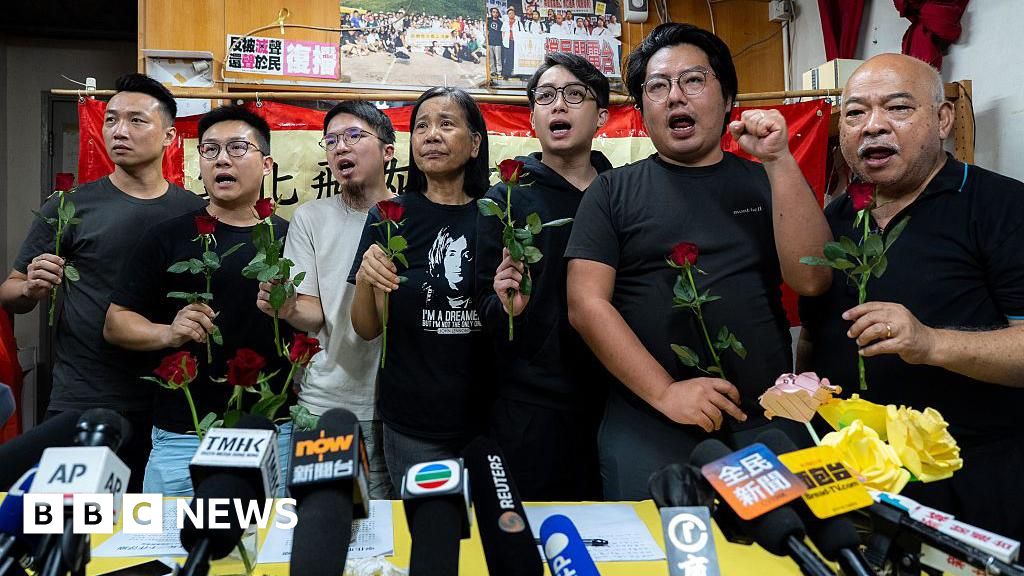A mining machine is seen at the Bayan Obo mine containing rare earth minerals, in Inner Mongolia, China.
China Stringer Network | Reuters
In April 2025, China imposed new export controls on seven rare earth elements and the permanent magnets derived from them — materials that form the foundation of modern life and modern warfare. Fighter jets, missiles, electric vehicles, drones, wind turbines, and even data centers rely on high-performance magnets made from these critical minerals. By restricting their flow, Beijing did not just flex its industrial muscle, it revealed America's and the rest of the world's dangerous vulnerability. China's latest actions show their readiness and ability to weaponize American and global dependence.
This is not a new challenge. The United States has known for over 15 years that its critical mineral supply chains were too concentrated, too fragile, and too exposed to Chinese leverage and control. And yet, across Democratic and Republican administrations, we have failed to respond with urgency or coherence. Now, the consequences of those failures have grabbed us by the neck and are cascading across our commercial and defense sectors.
Following the London talks, Washington and Beijing announced on Friday a new trade framework under which China will resume approving export licenses for rare earths over the next six months. U.S. officials have publicly extolled the breakthrough — but have offered few details about what was given in return. That leaves major questions unanswered: What were the U.S. trade-offs? How will the deal be enforced? And what happens when the six months are up?
Skepticism is high. Ford recently halted production at its Chicago plant due to a magnet shortage — underscoring that even short-term supply interruptions have real consequences. Paper agreements are not supply chain solutions. Without transparency, timely approvals, and long-term planning, this could easily become another diplomatic cycle of one step forward, two steps back.

Even this limited reprieve carries risks. Dozens of companies in Europe and North America have described China's export license process as highly invasive — requiring firms to submit detailed production data, end-use applications, facility images, customer names, and transaction histories. Some applicants have been denied for not providing photographs or documentation of their end users.
Executives say the process amounts to "official information extraction."
While firms are advised not to share sensitive IP, omitting key details can mean indefinite delays. For companies in defense supply chains, the implications are alarming: valuable commercial intelligence could be used to map competitors, disrupt pricing, or advance Chinese substitutes.
This isn't just licensing — it's competitive surveillance. And until the U.S. builds secure, independent capacity across the critical minerals supply chain, it remains exposed to both disruption and data risk.
This vulnerability did not happen overnight. Many have been watching this slow-motion train wreck for years. In 2010, China cut off rare earth exports to Japan during a maritime dispute, a clear warning shot the U.S. observed but brushed off. In 2014, the Obama administration won a WTO case against China's export restrictions but wrongly assumed that legal success would deter further manipulation.
What Trump, Biden have done
The first Trump administration identified rare earths as critical but notably exempted them from 2018 China tariffs, perhaps an unspoken acknowledgment of U.S. dependence. Biden took the most structured approach to date: Executive Order 14017, the Critical Minerals Working Group, and funding from the IIJA and IRA. Strategic partnerships like the Minerals Security Partnership emerged. But progress was slow, hampered by permitting delays and uneven ally commitments.
The second Trump administration has returned with more aggressive measures, invoking Section 232, activating the Defense Production Act, and proposing major funding boosts in FY2026. A National Energy Dominance Council now coordinates efforts. Yet these measures, like China's six-month reprieve, still fall short of dislodging Beijing's grip. And crucially, the defense sector remains cut off, with no such licensing window available.
The recent G7 summit in Canada underscored the global stakes. European Commission President Ursula von der Leyen directly accused China of "weaponizing" its control over key materials like rare earths, calling for a united G7 response. The result: a G7 Critical Minerals Action Plan. Though China was not mentioned by name, the subtext was unmistakable. The plan commits G7 members to raise ESG and traceability standards for key resources; mobilize capital for new projects in critical mineral mining and processing; and cooperate on innovation in recycling, substitution, and refining technologies.
Predictably, Beijing reacted with fury. The Chinese Ministry of Foreign Affairs dismissed the plan as "a pretext" for protectionism, claiming the G7 was instigating confrontation out of fear of losing market share.
Brussels is now signaling that trade negotiations with Beijing are effectively stalled, so the odds of Chinese retaliation — particularly against the EU — are rising. If China doubles down, it risks pushing the EU, Japan, South Korea, and India more tightly into Washington's orbit — precisely what Beijing hopes to avoid.
China's dominant position in rare earth mining
The raw numbers are staggering. China accounts for roughly 70% of global rare earth mining but over 90% of refining capacity. It produces 92% of the world's neodymium-iron-boron (NdFeB) magnets — used in everything from submarines to Teslas. This dominance is no accident. China subsidized processing, focused on global acquisitions across the supply chain, and scales up production much faster than the West can approve and issue permits for a single mine.
U.S. sites like MP Materials' Mountain Pass and Round Top remain incomplete without downstream processing. The DoD and DOE have offered grants, and the FY2026 Trump budget looks to expand U.S. mining capacity and secure access to critical minerals. But all this remains dwarfed by China's head start and longtime industrial command-and-control of the sector.
The Mountain Pass Rare Earth Mine & Processing Facility, owned by MP Materials, in Mountain Pass, California.
George Rose | Getty Images News | Getty Images
China moved early and decisively into Africa and Latin America, partnering with governments in the Democratic Republic of Congo, Bolivia, and Chile; investing in ports, rails, and refining infrastructure. In contrast, U.S. efforts and engagement on these sets of issues has been piecemeal and values-forward, prioritizing transparency and governance, important issues indeed, but delivering limited momentum of the critical mineral issues. Even recent MOUs with Ukraine and the Democratic Republic of Congo remain, for now, symbolic, hindered by conflict and instability in those countries.
The London talks and recent trade deal progress bought time. But time without a strategy is not fruitful. China's licensing regime remains intact, its data demands unabated. The defense sector remains shut out. Meanwhile, congressional threats to rescind clean energy and industrial policy funding could stall rare-earth projects just as they gain traction.
This is a decisive moment. China is betting that America's internal divisions — between labor, industry, environmentalists, tribal nations, and political factions — will prevent the kind of unified, sustained effort needed to compete. They may be right. The U.S. needs to proves them wrong.
Critical minerals are geopolitical power
The United States must now treat critical minerals not as commodities, but as instruments of geopolitical power. China already does. Escaping its grip will require more than mine permits and short-term funding. It demands a coherent, long-term strategy to build a complete supply chain that includes not only domestic capabilities but also reliable allies and partners. From mining and refining to magnet production and recycling, every link must be strengthened through targeted investment, permitting reform, and strategic coordination.
A successful and sustainable policy requires commitment from one presidency to the next. Nor can the U.S. afford to engage allies and partners only rhetorically. Countries like the Democratic Republic of Congo, Chile, and Indonesia (among others) need sustained partnerships backed by financing, technology transfer, and critical infrastructure investments, not just our lectures on governance.
The six-month export reprieve from China is not a solution — it is a stress test. It reveals whether the U.S. can finally focus and act, or whether it will retreat again into complacency. Beijing is betting it will be the latter. Washington must respond with urgency, unity, and a strategy equal to the scale of the challenge. There is still time, but not much.
—By Dewardric McNeal, Managing Director and Senior Policy Analyst at Longview Global, and a CNBC Contributor











 English (US) ·
English (US) ·